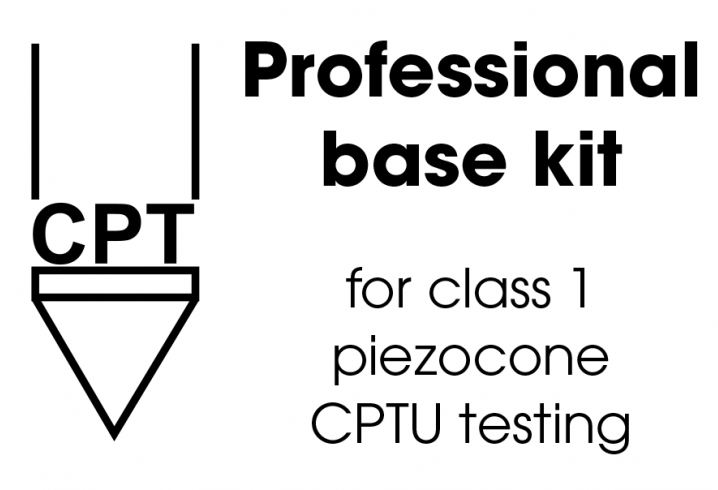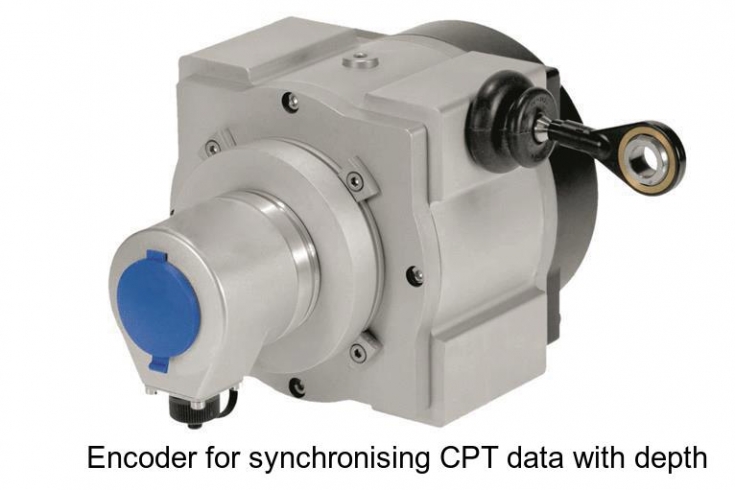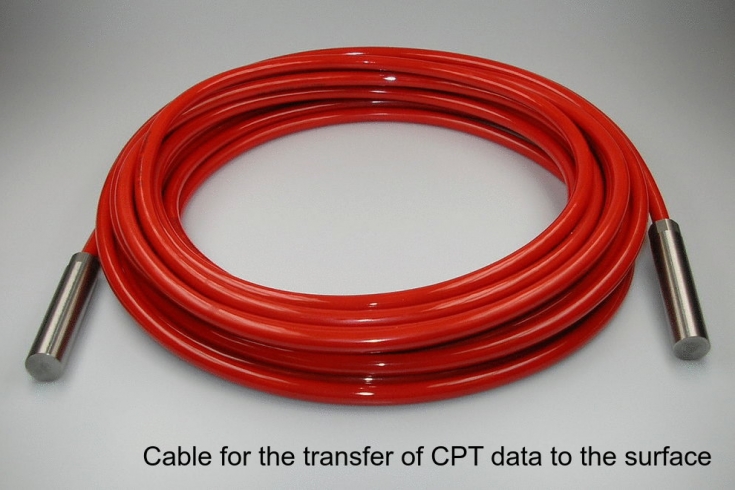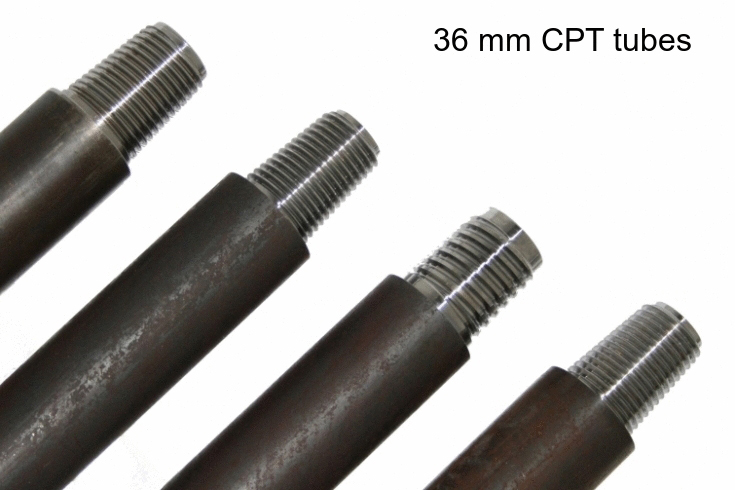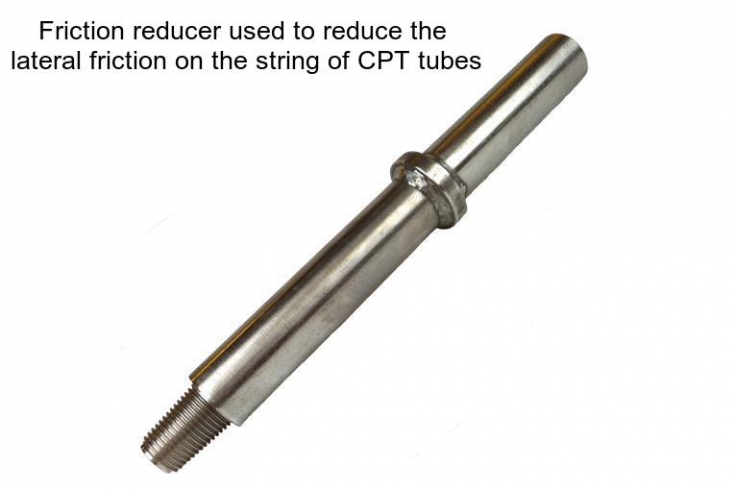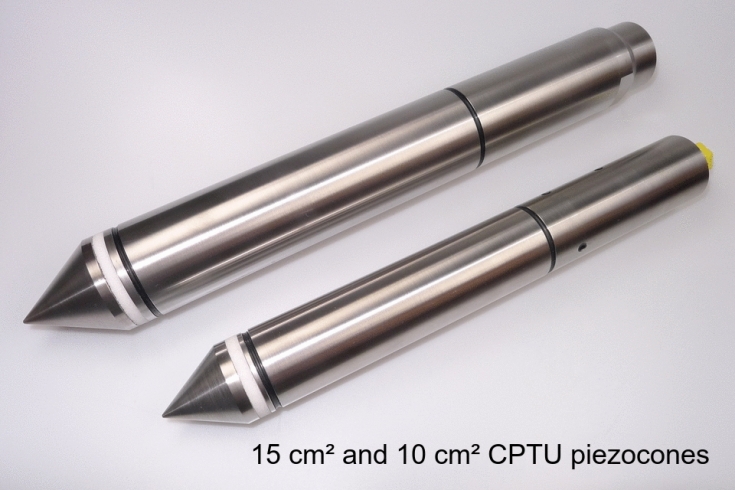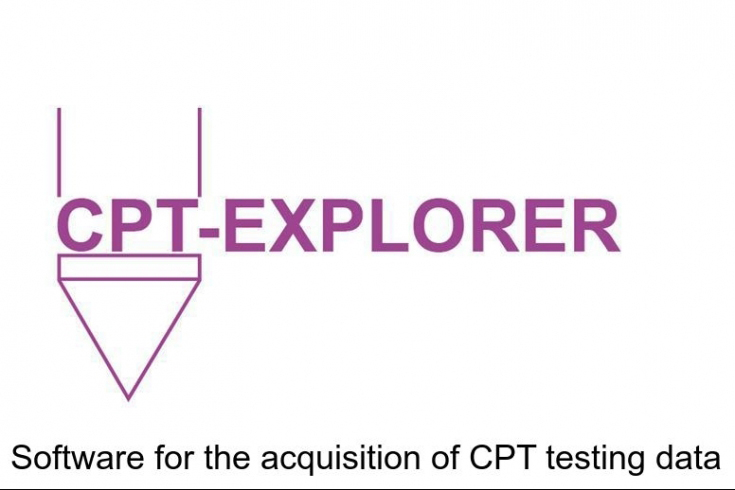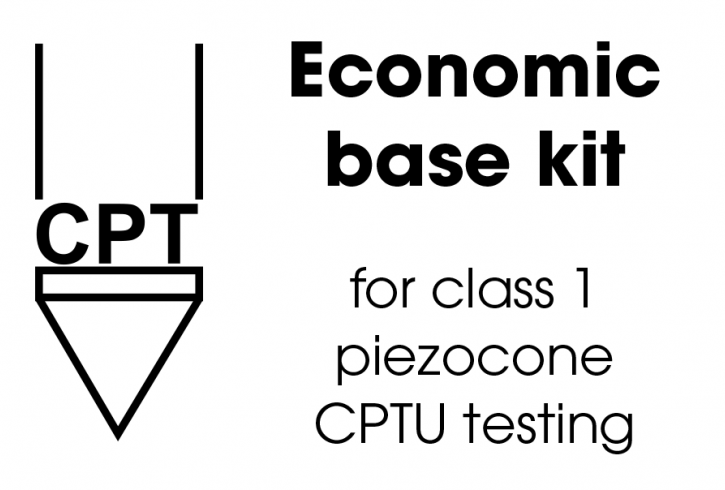The CPT-logger is the heart of the data acquisition system for CPT(U) testing. It is to be used in combination with a standard laptop or industrial computer and CPT-Explorer data acquisition software.
The CPT-logger combines the following functions:
- It supplies power to the attached electric cone or piezocone
- It digitizes the incoming analogue signals
- It conditions the incoming digital signals from the depth synchronization
- It synchronizes all data for processing on attached computer
The CPT-Logger is compatible with all compression and subtraction type digital CPT piezocones. The high-grade waterproof housing makes the unit extremely suitable for working in the field, its compact design assures the use of little space.
For synchronizing the recorded CPT data with depth, an optical linear displacement encoder is required. This highly accurate device generates 10 pulses per cm and counts in two directions for optimum synchronization. It comes complete with mounting bracket.
CPT-Explorer is a state-of-the-art software package specially designed for the on-site registration of cone penetration testing data. It meets the latest national and international standards and industry demands. Years of experience in the CPT industry make this software fulfil your demands and your wishes. CPT-Explorer is modern and versatile and based on Microsoft Windows Technology.
CPT-Explorer is easy to install and the user interface makes the CPT testing procedures clear and understandable. It can be controlled by means of the keyboard, scroll mouse, or touchscreen. It can also be used in conjunction with data acquisition equipment from other manufacturers. The user-interface language is available in both English and Dutch. A French language option will be available soon.
CPT-Explorer is a software package that will be purchased; so, you do not have to pay any annual license fee. The software is constantly updated, and updates will be sent to its users entirely free of charge.
If you wish, you can download a demo-version of CPT-Explorer.
CPT-Office is a Microsoft Windows based software package for the processing of CPT data, soil classification and the plotting of CPT test results from your CPT system.
The user-friendly program structure is project-oriented and provides, among other features, the possibility to edit project data and variables such as ground level, coordinates and water table in one simple step. Several individual CPT files or complete project files can be opened and processed simultaneously. All windows can be arranged according to the user’s preferences.
Data can be viewed as tables and graphic plots and all CPT data can be edited freely while the raw data files remain unchanged. The user can opt for various languages (e.g. English, Dutch, German and more to follow), both for the program readings and for the plot versions.
Supports practically all data import formats, including the standardized GEF format. The processed data can be exported directly to Microsoft Excel or as ASCII, PDF and JPEG format.
A CPTU piezocone is a high-precision measuring instrument. CPTU (digital) piezocones are available with different cross-sectional surfaces (10 cm² and 15 cm²) and either as compression type or subtraction type. The piezocones proposed in this base kit are so-called subtraction type (S-type) CPTU piezocones. In S-type electric CPT cones, the strain gauges (sensors) measuring the cone resistance (qc) and the local friction (fs) are mounted on one single measuring body. This gives the subtraction type cones superior sturdiness over the compression type cones, who have 2 individual measuring elements overlaying each other.
The CPTU piezocone features a biaxial inclinometer, which measures the deviation from the vertical axis in 2 orientations during CPT testing. It is integrated in the cone body just above the conical tip. This assures rapid alarm, when the cone hits an obstacle or when it exceeds a previously set value.
A piezocone is in fact a standard electric CPT cone with extra built-in pressure sensor, enabling to measure the in-situ pore pressure as well. All parameters are measured continuously and simultaneously.
The output signal from the piezocone is a voltage signal. It is amplified in the cone itself and transferred to the surface by means of a string of CPT sounding cables provided with gold-plated Lemo connectors for uncompromised contact. This cable goes to the CPT-Logger datalogger where the analogue signal is converted into a digital signal. The digital signal is then sent to a computer for recording and further processing.
The piezocones are available in 2 different versions, i.e. a cone with a 10 cm² cross-section (Ø = 36 mm) and a 15 cm² cross-section (Ø = 44 mm). Please contact the Gouda-Geo sales department for advice on selecting the right cone for the job. Also be aware that one cone is not enough for any job (one=none). Always opt for at least 2 cones.
A proper preparation of the piezocone and other equipment is paramount prior to CPTU testing in order to have good pore pressure response. About 24 hours before the actual CPTU tests will take place, the pore pressure filters are to be de-aired and saturated with glycerin. To achieve this, the following equipment is recommended:
- Pore pressure filters (sufficient quantity)
- Pressure vessel with porcelain plate
- High-vacuum silicon grease
- Vacuum pump with pressure gauge
- Glycerin (saturation fluid)
- Soldering wire
- Small soup ladle
- Airtight container for storage and transport
Prior to the CPTU test in the field, the piezocone is to be prepared. The pore pressure filter has to be put in place and the piezocone itself has to be saturated. To achieve this, the following equipment is recommended:
- De-aired pore pressure filters (sufficient quantity)
- Small soup ladle
- Syringe
- Knitting needle
- Condoms
- Funnel
- Special saturation funnel that fits around the piezocone
We recommend a complete set for the de-airing and saturation of either a S10-CFIIP (D = 36 mm) or S15-CFIIP piezocone (D = 44 mm) for above mentioned preparations.
Since the pore pressure filters can only be used once, make sure to have sufficient filters available before testing. Always select the right pore pressure filter for the piezocones you have.
A complete range of CPT sounding cables is available for electric (piezo-)cones. Note that a well selected cable will save time and annoyance during CPT testing. If you are in doubt, please consult the Gouda Geo-Equipment sales department to determine the appropriate cable for the job.
The CPT sounding cables are provided with unisex extension connectors that allow for unlimited extension of the CPT cable string. The cables are made of highly flexible PUR-TPE cable material featuring high tensile strength and wear resistance. The unisex extension connectors are high-quality Lemo connectors with gold-plated connecting pins.
A standard string of CPT sounding cables composes of:
- A starting cable from the electric cone to the first unisex extension connector. We recommend a length of 1.8 meter.
- One of more extension cables from one unisex extension connector to another unisex extension connector. Any length available. Gouda-Geo has the following standard lengths in stock: 5 m, 10 m, 15 m, 20 m, 25 m and 50 m
- A cross-over cable from the unisex connector to the CPT-logger datalogger. We recommend a length of 1.8 meter.
We do realize that one size does not fit all. It is therefore that the CPT sounding cable can be supplied in any length you might need. Selecting the right cable in order to optimize the cable lay-out is really important. Just specify the lengths required at order.
The CPT push-and-pull clamp is purposely designed for automatic pushing and pulling of CPT sounding tubes (Ø = 36 mm) and casing tubes (Ø = 55 mm) during electrical CPT testing operations.
The CPT push-and-pull clamp has a pushing capacity of 200 kN and a pulling capacity of 260 kN. It fits in the yoke of a 100 kN as well as a 200 kN CPT penetrometer pusher. It can be used in combination with all type of electric CPT cones and friction reducers.
The removable clamping blocks are made of hard metal. The force applied on the tubes by the clamp, is distributed evenly by the clamping blocks over the gripping area. This guarantees excellent seizing and prevents damaging or deformation of the sounding tube.
Pushing and pulling CPT sounding and casing tubes has eventually become an easy and quick job.
A friction reducer combines two purposes. It connects the piezocone to the CPT sounding tubes and it reduces the lateral friction on the string of CPT sounding tubes during penetration.
The friction reducers are available either with cams or with a ring. The ring type friction reducer is primarily used in clays and clayey soils. The cam type friction reducer is mostly used in sands.
CPT sounding tubes are used to push the electric cone into the ground by means of a CPT penetrometer pusher. Gouda Geo-Equipment CPT sounding tubes meet the highest quality standards. The tube material is manufactured by one of Europe’s leading steel manufacturers according to our own standards. No distinction whatsoever is made between tubes for 100 kN and 200 kN testing. All tubes are suitable for any pushing force and for any type of CPT test.
During production, every single tube is checked automatically by means of sensors integrated in the lathe machine in order to comply with all national and international standards.
Our CPT sounding tubes are available with either standard (STD) tapered thread, quick-lock (QLK) double-entry rope thread, AR tapered rope thread and 2R tapered rope thread. Because of its superior characteristics, we recommend CPT sounding tubes with quick-lock (QLK) double-entry rope thread. The main advantages are the number of turns required to lock / unlock (only 2.5 turns), the improved strength of the thread (over 40% stronger than the standard tapered thread) and the relative ease to clean it.
In order to assure excellent functioning of the above-described system for CPTU testing, Gouda-Geo has assembled a kit for repair and maintenance. The kit comprises:
- Replacement parts for the piezocone
- Replacement parts for CPT sounding cables
- Replacement parts for the CPT push-and-pull clamp
- Maintenance materials and lubricants, such as silicone grease, a graphite containing grease, a cleaning agent for connectors, and alike
- Special tools
Background Reading
The book “Cone Penetration Testing in Geotechnical Practice” written by Tom Lunne, John J.M. Powell, and Peter K. Robertson is a brilliant book on cone penetration testing (CPT and CPTU). It gives a very elaborate insight in technique and use of cone penetration testing equipment. A must have for anyone working in the geotechnical field; the ultimate source for information.
The purpose of this book is to provide guidance on the specification, performance, use and interpretation of the electric cone penetration test (CPU), and in particular the cone penetration test with pore pressure measurement (CPTU) commonly referred to as the “piezocone test.”
Recommendation guidelines interpret a full range of geotechnical parameters from cone penetration data and relevant examples and case histories are given throughout the text.

